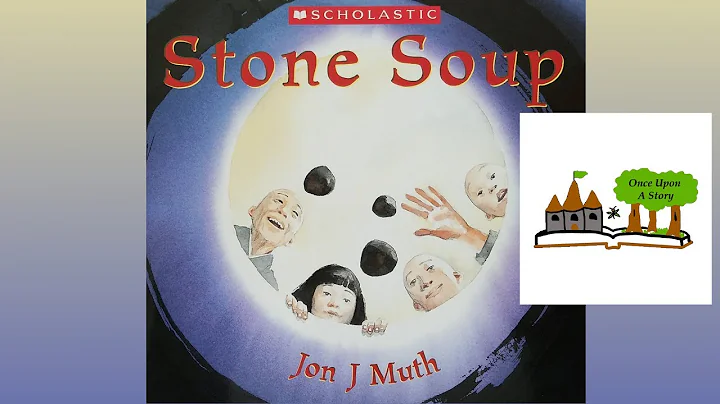John F Muth
age ~59
from Cary, NC
- Also known as:
-
- John Franklyn Muth
- Phone and address:
-
115 Beasley Ct, Cary, NC 27513
(919)4626382
John Muth Phones & Addresses
- 115 Beasley Ct, Cary, NC 27513 • (919)4626382 • (919)8484693
- Raleigh, NC
- Norfolk, VA
- Alexandria, VA
- Chesapeake, VA
- 115 Beasley Ct, Cary, NC 27513 • (919)4525992
Work
-
Position:Educator
Education
-
Degree:Associate degree or higher
Wikipedia

John Muth
view sourceJohn Fraser Muth (September 27, 1930 October 23, 2005 in Key West, Florida) was an American economist. He is known as "the father of the rational ...
Vehicle Records
-
John Muth
view source -
Address:245 Kalmar Dr, Chesapeake, VA 23320
-
VIN:1MEFM40187G603244
-
Make:MERCURY
-
Model:MONTEGO
-
Year:2007
Name / Title
Company / Classification
Phones & Addresses
Shareholder
East Coast Fresh
Food Production · Crop Preparation for Market
Food Production · Crop Preparation for Market
8704 Bollman Pl, Savage, MD 20763
(410)7999900
(410)7999900
DirectorAssociate Professor
Kyma Technologies
Semiconductors · Mfg Semiconductors · Mfg Semiconductors/Related Devices · Semiconductors & Related Devices Mfg · Semiconductors & Related Devic
Semiconductors · Mfg Semiconductors · Mfg Semiconductors/Related Devices · Semiconductors & Related Devices Mfg · Semiconductors & Related Devic
8829 Midway West Rd, Raleigh, NC 27617
(919)7898880, (919)7898880, (919)7898881
(919)7898880, (919)7898880, (919)7898881
Principal
Howard County Game Farm
General Crop Farm
General Crop Farm
13825 Howard Rd, Dayton, MD 21036
Us Patents
-
Optoelectronic And Microelectronic Devices Including Cubic Znmgo And/Or Cdmgo Alloys
view source -
US Patent:6423983, Jul 23, 2002
-
Filed:Oct 13, 2000
-
Appl. No.:09/687519
-
Inventors:Jagdish Narayan - Raleigh NC
Ajay Kumar Sharma - Hillsboro OR
John F. Muth - Cary NC -
Assignee:North Carolina State University - Raleigh NC
-
International Classification:H01L 3300
-
US Classification:257 96, 257103
-
Abstract:An electronic device has an alloy layer containing magnesium oxide and at least one of zinc oxide and cadmium oxide and having a cubic structure on a substrate. The alloy layer may be directly on the substrate or, alternatively, one or more buffer layers may be between the alloy layer and the substrate. The alloy layer may be domain-matched epitaxially grown directly on the substrate, or may be lattice-matched epitaxially grown directly on the buffer layer. The cubic layer may also be used to form single and multiple quantum wells. Accordingly, electronic devices having wider bandgap, increased binding energy of excitons, and/or reduced density of growth and/or misfit dislocations in the active layers as compared with conventional III-nitride electronic devices may be provided.
-
Modular Observation Crawler And Sensing Instrument And Method For Operating Same
view source -
US Patent:6450104, Sep 17, 2002
-
Filed:Apr 28, 2000
-
Appl. No.:09/560478
-
Inventors:Edward Grant - Raleigh NC
John F. Muth - Cary NC
John Steven Cottle - Raleigh NC
Brian Ellery Dessent - Oakland CA
Jason Alan Cox - Raleigh NC -
Assignee:North Carolina State University - Raleigh NC
-
International Classification:B61B 1300
-
US Classification:1041382, 1041381, 738658, 74110, 105365
-
Abstract:A robotic apparatus adapted for locomotion in an enclosed space such as a pipe includes a combination of articulated gripping and locomotive modules. Each gripping module includes an actuator mechanically linked to gripping members such that axial forces produced by the actuator are translated to radial forces in the gripping members, whereby the gripping members are caused to alternately hold and release the engagement of the robotic apparatus with surfaces of the enclosed space. Each locomotive module includes one or more actuators adapted to alternatively expand and contract the length of the locomotive module. The sequence of operations of the gripping and locomotive modules can be controlled such that the robotic apparatus can crawl through the enclosed space in an inchworm-like fashion and is capable of navigating turns and traversing inclines.
-
Method For Making Optoelectronic And Microelectronic Devices Including Cubic Znmgo And/Or Cdmgo Alloys
view source -
US Patent:6518077, Feb 11, 2003
-
Filed:Jan 15, 2002
-
Appl. No.:10/050077
-
Inventors:Jagdish Narayan - Raleigh NC
Ajay Kumar Sharma - Hillsboro OR
John F. Muth - Cary NC -
Assignee:North Carolina State University - Raleigh NC
-
International Classification:H01L 2100
-
US Classification:438 22, 438 20, 257 96
-
Abstract:An electronic device has an alloy layer containing magnesium oxide and at least one of zinc oxide and cadmium oxide and having a cubic structure on a substrate. The alloy layer may be directly on the substrate or, alternatively, one or more buffer layers may be between the alloy layer and the substrate. The alloy layer may be domain-matched epitaxially grown directly on the substrate, or may be lattice-matched epitaxially grown directly on the buffer layer. The cubic layer may also be used to form single and multiple quantum wells. Accordingly, electronic devices having wider bandgap, increased binding energy of excitons, and/or reduced density of growth and/or misfit dislocations in the active layers as compared with conventional III-nitride electronic devices may be provided.
-
Methods And Systems For Selectively Connecting And Disconnecting Conductors In A Fabric
view source -
US Patent:6852395, Feb 8, 2005
-
Filed:Jan 8, 2002
-
Appl. No.:10/041248
-
Inventors:Anuj Dhawan - Raleigh NC, US
Tushar Kanti Ghosh - Raleigh NC, US
John Muth - Raleigh NC, US
Abdelfattah Seyam - Cary NC, US -
Assignee:North Carolina State University - Raleigh NC
-
International Classification:B32B007/00
-
US Classification:428196, 428198, 442229, 442301, 442377, 442414
-
Abstract:Methods and systems for selectively connecting and disconnecting conductors in a fabric are disclosed. First and second conductors are integrated into a fabric such that the conductors intersect at a crossover point. The conductors are bonded to each other at the crossover point to improve AC and DC characteristics. Disconnect areas may be provided near the crossover point to allow selective disconnection of the conductors from the crossover point.
-
Methods And Systems For Selectively Connecting And Disconnecting Conductors In A Fabric
view source -
US Patent:7329323, Feb 12, 2008
-
Filed:Nov 19, 2004
-
Appl. No.:10/993452
-
Inventors:Anuj Dhawan - Raleigh NC, US
Tushar Kanti Ghosh - Raleigh NC, US
John Muth - Raleigh NC, US
Abdelfattah Seyam - Cary NC, US -
Assignee:North Carolina State University - Raleigh NC
-
International Classification:B32B 37/00
-
US Classification:156 731, 1562728, 428196, 428198
-
Abstract:Methods and systems for selectively connecting and disconnecting conductors in a fabric are disclosed. First and second conductors are integrated into a fabric such that the conductors intersect at a crossover point. The conductors are bonded to each other at the crossover point to improve AC and DC characteristics. Disconnect areas may be provided near the crossover point to allow selective disconnection of the conductors from the crossover point.
-
Fabric And Yarn Structures For Improving Signal Integrity In Fabric-Based Electrical Circuits
view source -
US Patent:7348285, Mar 25, 2008
-
Filed:Jun 27, 2003
-
Appl. No.:10/609074
-
Inventors:Anuj Dhawan - Raleigh NC, US
Tushar K. Ghosh - Cary NC, US
Abdelfattah M. Seyam - Cary NC, US
John Muth - Raleigh NC, US -
Assignee:North Carolina State University - Raleigh NC
-
International Classification:D03D 15/02
-
US Classification:442229, 442 4, 442 6, 442189, 442228, 442301, 174107, 174108, 57210, 57211, 426377, 426592, 333123, 333160, 333206
-
Abstract:Coaxial and twisted pair conductive yarn structures reduce signal crosstalk between adjacent lines in woven electrical networks. A coaxial conductive yarn structure includes an inner conductive yarn having a plurality of conductive strands twisted together. An outer conductive yarn is wrapped around the inner conductive yarn. An insulating layer separates the inner and outer yarns. A twisted pair conductive yarn structure includes first and second conductive yarns, each including a plurality of conductive strands being twisted together. The first and second conductive yarns are twisted together to form a helical structure. In a woven electrical network, at least one conductor of adjacent conductive yarn structures is connected to ground to reduce signal crosstalk. Coaxial and twisted pair yarn structures may also be formed simultaneously with weaving or knitting the threads that make up the structures into a fabric.
-
Doping Of Semiconductor Materials By Nuclear Transmutation
view source -
US Patent:8363775, Jan 29, 2013
-
Filed:Nov 26, 2007
-
Appl. No.:11/998861
-
Inventors:Noel A. Guardala - Columbia MD, US
Ian Patrick Wellenius - Raleigh NC, US
John F. Muth - Cary NC, US -
Assignee:The United States of America as represented by the Secretary of the Navy - Washington DC
-
International Classification:G21G 1/10
-
US Classification:376183, 376190
-
Abstract:As typically embodied, the inventive method features bombardment of atomic nuclei with He ions in order to effect transmutation of atoms from a first atomic element to a second atomic element. Two notable inventive genres describe transmutation of: oxygen to nitrogen in an oxygen-containing target (e. g. , including ZnO film); and, carbon to boron in a carbon-containing target (e. g. , including SiC film). According to the former, transmutation of O to N occurs; more specifically, transmutation of O to O occurs via nuclear bombardment, and then transmutation of O to N occurs via decay by positron emission. According to the latter, transmutation of C to B occurs; more specifically, transmutation of C to C occurs via nuclear bombardment, and then transmutation of C to B occurs via decay by positron emission. Inventive practice frequently results in significant alteration of at least one physical property among: electronic carrier concentration; resistivity; photoconductivity; luminescence; morphology.
-
Methods For Nanoscale Structures From Optical Lithography And Subsequent Lateral Growth
view source -
US Patent:20070029643, Feb 8, 2007
-
Filed:Mar 22, 2004
-
Appl. No.:10/550178
-
Inventors:Mark Johnson - Raleigh NC, US
Douglas Barlage - Durham NC, US
John Muth - Cary NC, US -
International Classification:H01L 23/58
-
US Classification:257651000, 977936000, 257E21400
-
Abstract:Methods, and structures formed thereby, are disclosed for forming laterally grown structures with nanoscale dimensions from nanoscale arrays which can be patterned from nanoscale lithography. The structures and methods disclosed herein have applications with electronic, photonic, molecular electronic, spintronic, microfluidic or nano-mechanical (NEMS) technologies. The spacing between laterally grown structures can be a nanoscale measurement, for example with a spacing distance which can be approximately 1-50 nm, and more particularly can be from approximately 3-5 nm. This spacing is appropriate for integration of molecular electronic devices. The pitch between posts can be less than the average distance characteristic between dislocation defects for example in GaN (ρ=10/cm→d=0.1 μm) resulting an overall reduction in defect density. Large-scale integration of nanoscale devices can be achieved using lithographic equipment that is orders of magnitude less expensive that that used for advanced lithographic techniques, such as electron beam lithography.
Classmates

John Muth
view sourceSchools:
Opportunities for Learning Dana Point CA 1996-2000
Community:
Gary Lin, Avilar Brace, Shane Griffith

John Muth
view sourceSchools:
Charlotte Valley Central High School Davenport NY 1997-2001
Community:
John Eggler, Sharon Kittner, Mark Mckee

John Muth
view sourceSchools:
Mill School Ventura CA 1962-1969, De Anza Junior High School Ventura CA 1969-1972
Community:
Sandra Catlett

John Muth
view sourceSchools:
Maywood Avenue Middle School Maywood NJ 1947-1953
Community:
Gale Weigand, Patricia Adams, Frank Madarasz, Roscoe Mullican, Kathie Stapperfenne, Douglas Calhoun, George Beardsley, Clorinda Alberino, Joel Gravina

John Muth | Monroeville E...
view source
John Muth, Carlynton High...
view source
John Muth | Williamsport ...
view source
John Muth, Sanborn Commun...
view sourceYoutube
Flickr
Plaxo

John Muth
view sourceHouston, TexasBuilding Automation Project Manager at Graves Mech... Past: Industrial/Commercial Sales Engineer at straus systems, Territory Manager Commercial HVAC...
Googleplus

John Muth
Education:
University of Hartford - Physics, University of Connecticut - Physics

John Muth
Tagline:
Blue Side Up

John Muth
Tagline:
Challenge accepted.

John Muth

John Muth

John Muth
Work:
L - L
Education:
L
About:
L
Tagline:
Coal coal coal coal coal coal coal coal coal coal coal coal coal coal coal coal
Bragging Rights:
L

John Muth

John Muth

Alexander John Muth
view source
John Muth
view source
John Muth
view source
John Muth
view source
John Muth
view source
John D Muth
view source
John Muth Jr
view source
John Muth
view sourceGet Report for John F Muth from Cary, NC, age ~59













